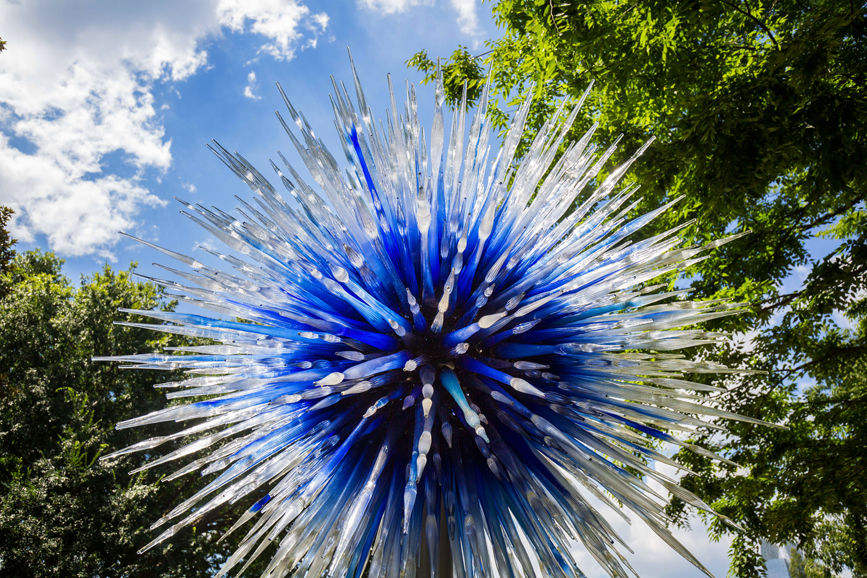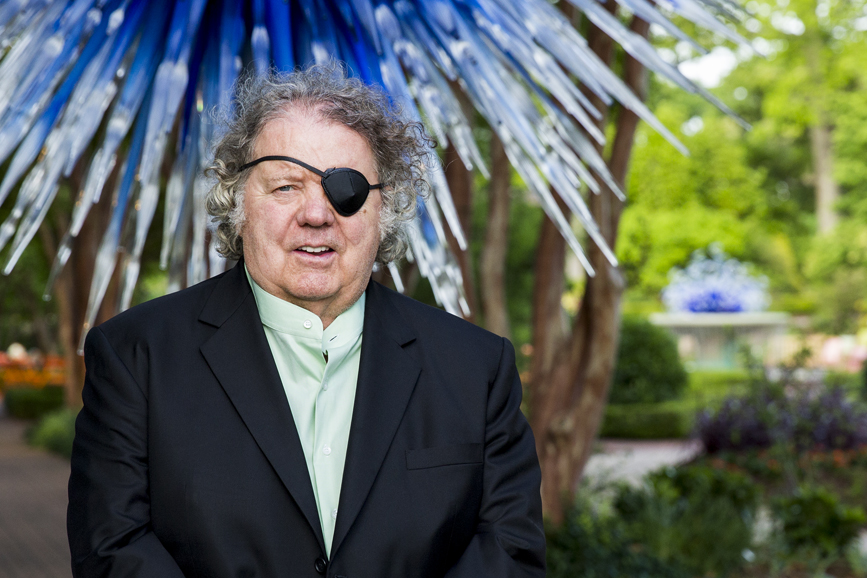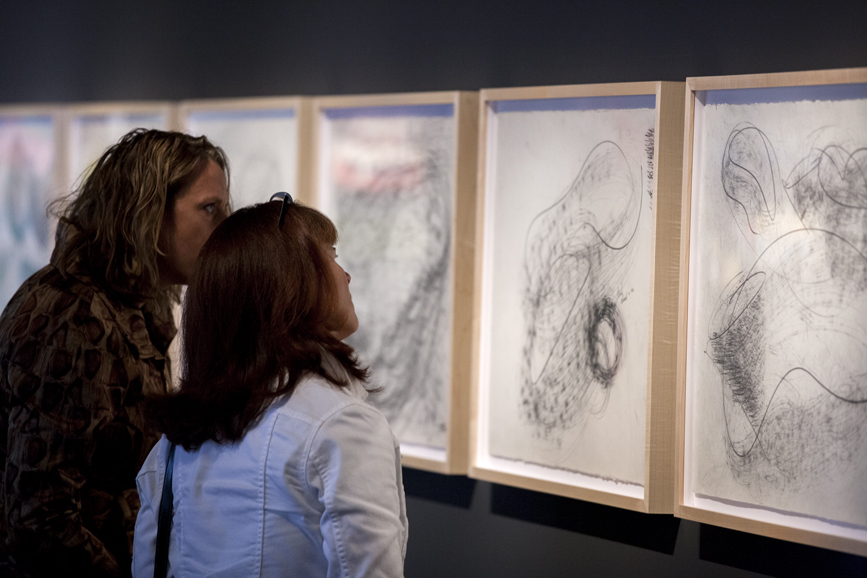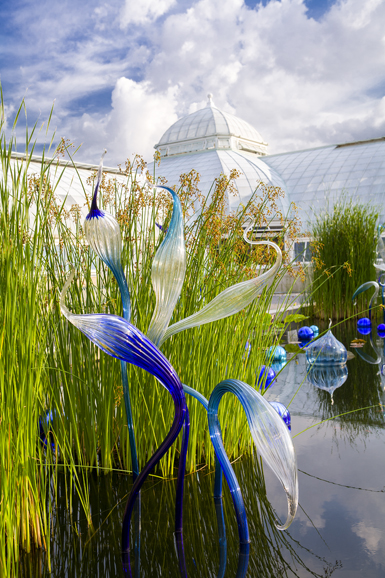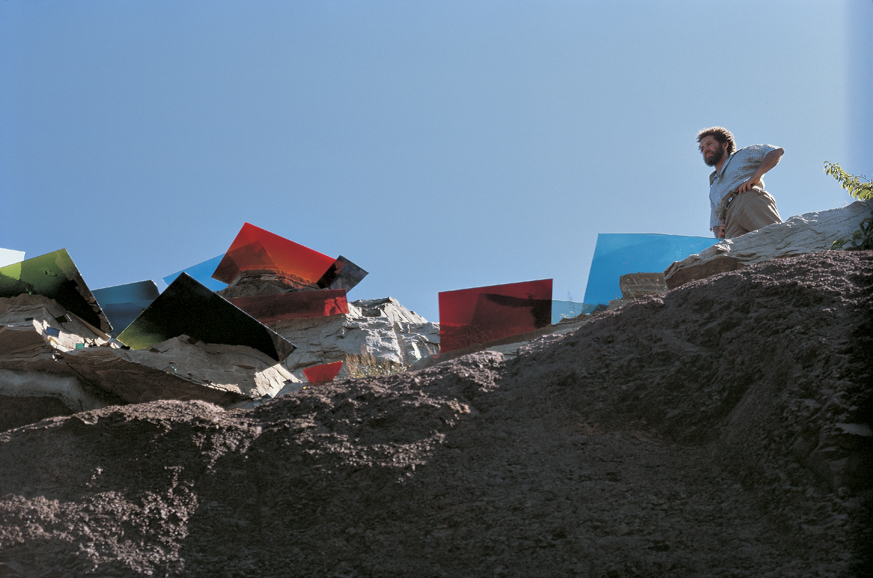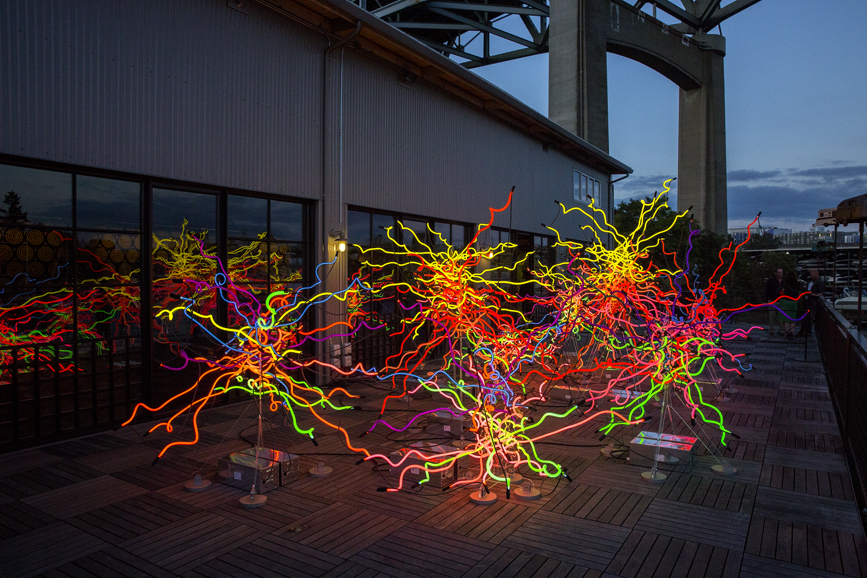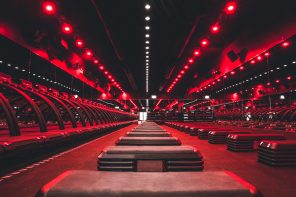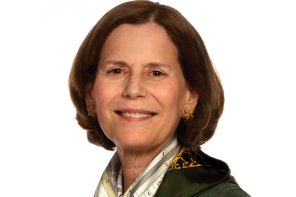At the New York Botanical Garden’s recent press luncheon, Todd Forrest made his way to the podium of the Grand Hyatt New York’s Manhattan Ballroom on crutches. The cause of his damaged left Achilles tendon? American glass master Dale Chihuly’s return to the Garden.
“I jumped for joy that the day had arrived (for the announcement),” joked Forrest, the Garden’s Arthur Ross vice president for horticulture and living collections.
This month, glass pieces for some 20 installations, as well as works on paper, will be shipped to the Garden. They’ll arrive in early April in eight 15-foot-long tractor-trailers, along with 17 installers, for an exhibit (Earth Day, April 22, through Oct. 29) that builds on the enchanting 2006 Chihuly blockbuster, which, Forrest says, “made us see the Garden in a different way.”
Indeed, Chihuly’s dynamic, organic glassworks — which dotted the 250-acre site in the Bronx and helped illuminate it at night — cast the National Historic Landmark as a midsummer night’s dream. Eleven years later, Chihuly and the Garden have designed an exhibit that will echo highlights of his career and the past show while shedding light on his creative process and the Garden’s ever-changing landscape.
The graceful “Blue Herons” that seemed eternally poised to take flight in the Enid A. Haupt Conservatory Courtyard’s Tropical Pool in 2006 — their necks elongated in yearning — will now be showcased with other Chihuly sculptures inside the Haupt Conservatory, itself an acclaimed example of the Victorian glasshouse.
The Tropical Pool and the water features of the Native Plant Garden — which opened in 2013 and so was not part of the earlier exhibit — will be the sites for Chihuly’s reimagining of the Artpark installation that he created for a 1975 group exhibit of temporary, outdoor works in Lewiston, New York, near Niagara Falls. Once again, handblown sheets of stained glass will capture the effects of shifting light as day passes to night.
Over at the LuEsther T. Mertz Library, the Garden will present a group of “Fire Orange Baskets” that Chihuly first developed in 1977 in homage to the Northwest Coast Indians. At the Library’s Art Gallery, visitors will be able to pore over works in pen, pastel and charcoal on heavy watercolor paper, which were not part of the 2006 show. The works — which began as a design element and a means of communication between the artist and his team at Chihuly Studio in Seattle — have become an end in themselves and, Forrest added, a way for viewers to explore a creative process that gives birth to sculptures like the spiky, kinetic “Tumbleweeds” and a new multicolored neon tower for the Conservatory Courtyard.
That process began in Tacoma, Washington, where Chihuly was born 75 years ago to a father of Czechoslovakian descent and a mother of Norwegian descent. Chihuly’s father was an organizer of meat packers; his mother, a homemaker who loved to garden. Chihuly lost his only brother when he was 15 years old, said Leslie Jackson Chihuly, the artist’s wife and president/CEO of Chihuly Studio and Chihuly Workshop.
“I’ve been his partner in life for 25 years and I’m not that old,” Mrs. Chihuly joked. At the luncheon, which offered a preview of spring on a balmy winter day, she illumined the life and work of a man “who has always thought of himself as an artist, not a glassblower per se. He still paints.”
At the University of Washington, where Chihuly studied interior design, he began to weave molten glass into textiles. One day, he blew a glass bubble. “It was,” Mrs. Chihuly said, “a ‘Eureka!’ moment.”
Chihuly went on to study in the first glass program in the United States, at the University of Wisconsin, and then at the Rhode Island School of Design, where he would later establish a glass program and serve as a popular teacher for more than a decade.
After receiving a Fulbright fellowship, he went to work in 1968 at the Venini glass factory in Venice. (He had sent out 100 letters to art glass companies and Venini was the only one to respond, Mrs. Chihuly said.) At Venini, Chihuly didn’t work on his own pieces but on assemblages that gave him insight into the team approach he uses today and that we observed on video at the press luncheon.
Three years later, he cofounded Pilchuck Glass School in Stanwood, Washington, as a springboard for cutting-edge work that has netted him 12 honorary doctorates, two fellowships from the National Endowment for the Arts and entrée to the world’s great museums, including the Musée des Arts Décoratifs, Palais du Louvre in Paris; the Tower of David Museum in Jerusalem, where more than one million saw his 1999 show; the Victoria and Albert Museum in London; the de Young in San Francisco; and the Museum of Fine Arts, Boston.
But Chihuly has always had an interest in outdoor exhibit spaces, threading the canals and piazzas of Venice with glass sculptures in 1995. He has shown at the Garfield Park Conservatory in Chicago and at the Royal Botanic Gardens, Kew, near London.
“Dale understands how his work will look in a garden,” Mrs. Chihuly said.
And, as viewers will once again discover, how that work can transform it.
For more, including information on the 39 “Chihuly Nights” and an interactive guide made possible by Bloomberg Philanthropies, visit nybg.org. And for more on Dale Chihuly, visit chihuly.com.

